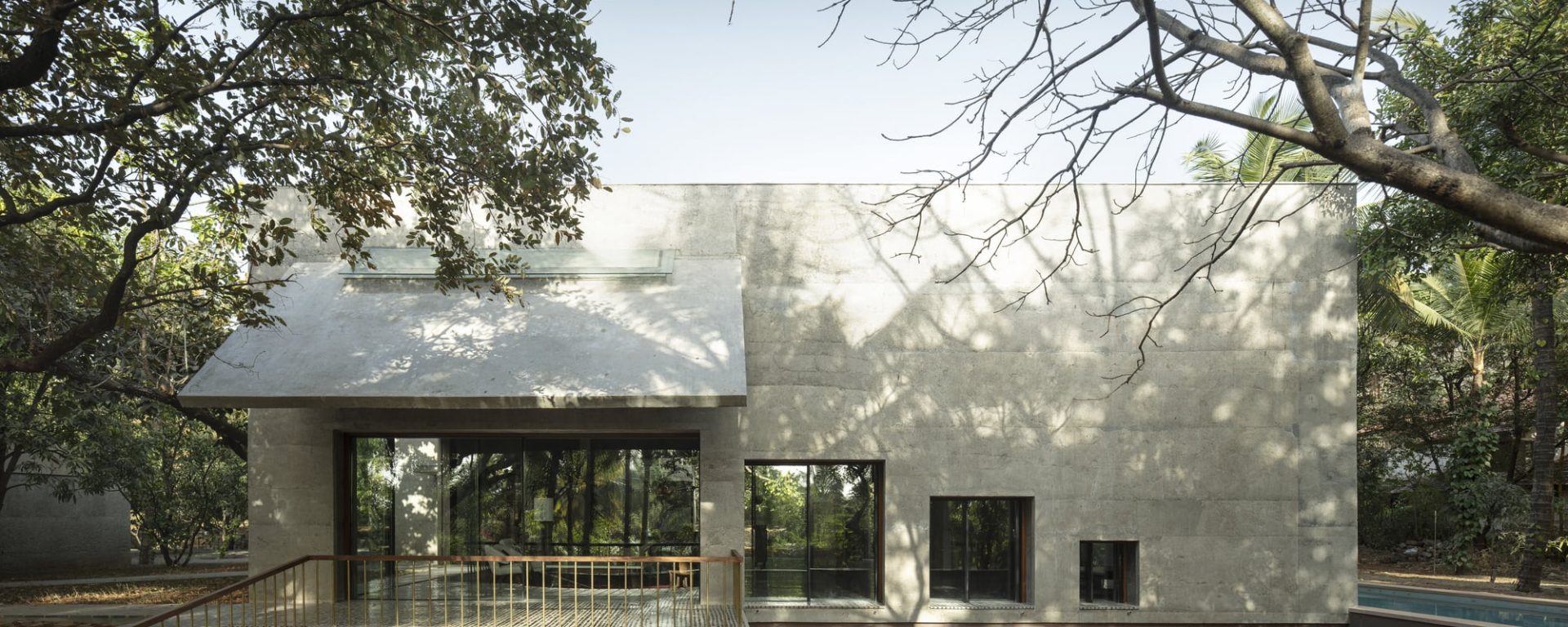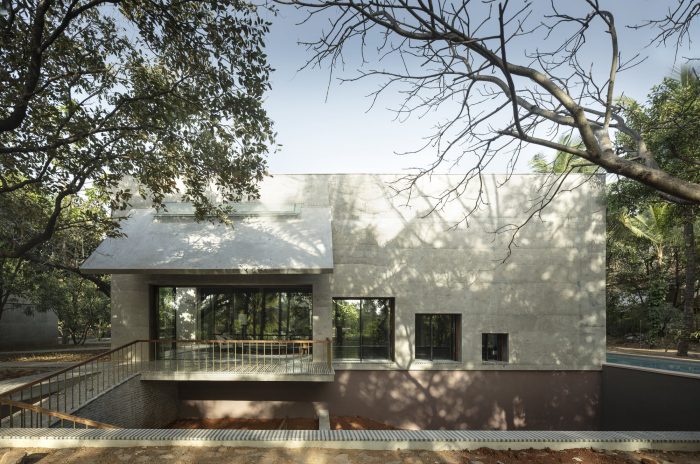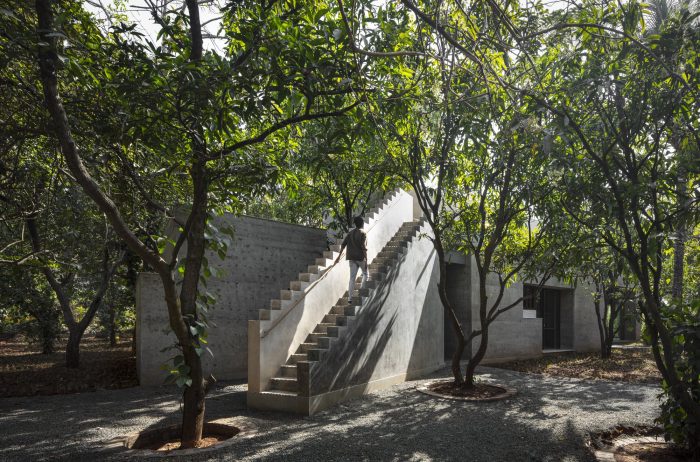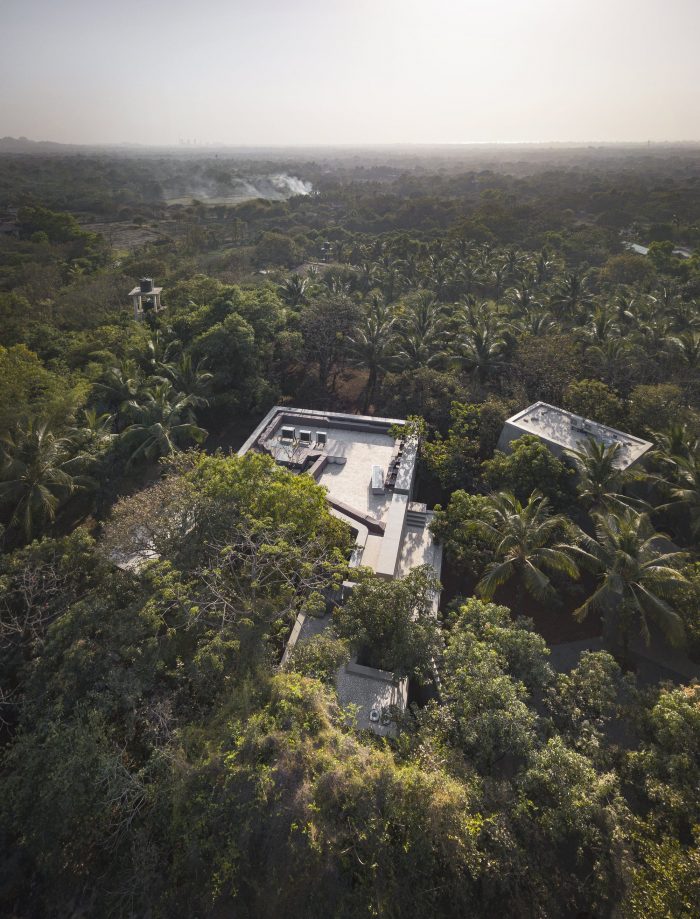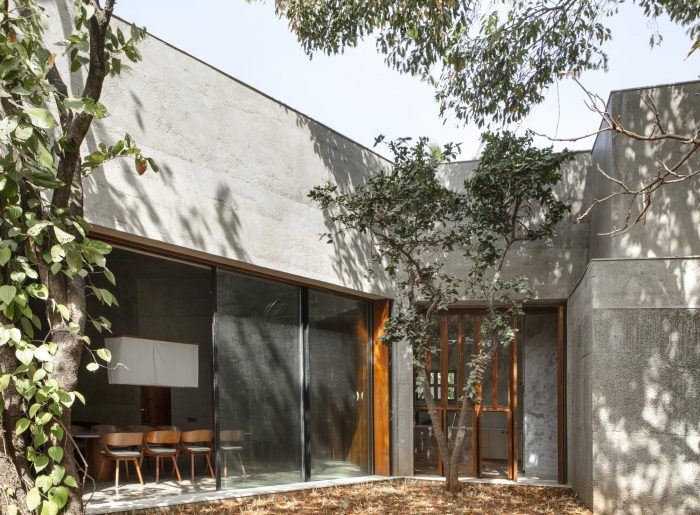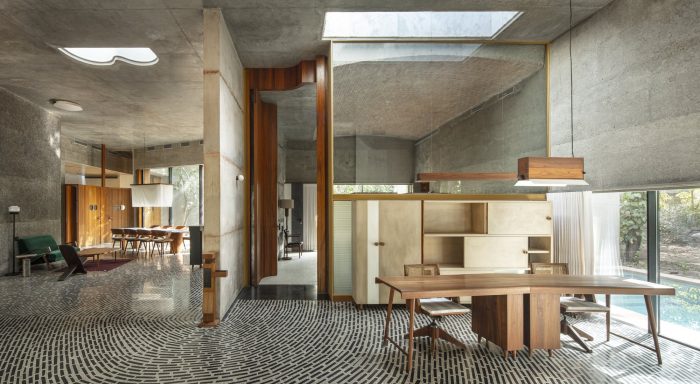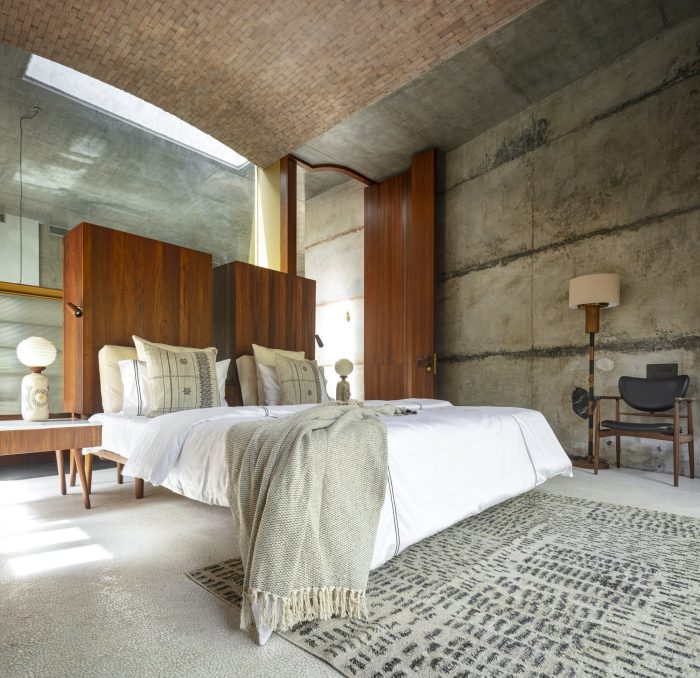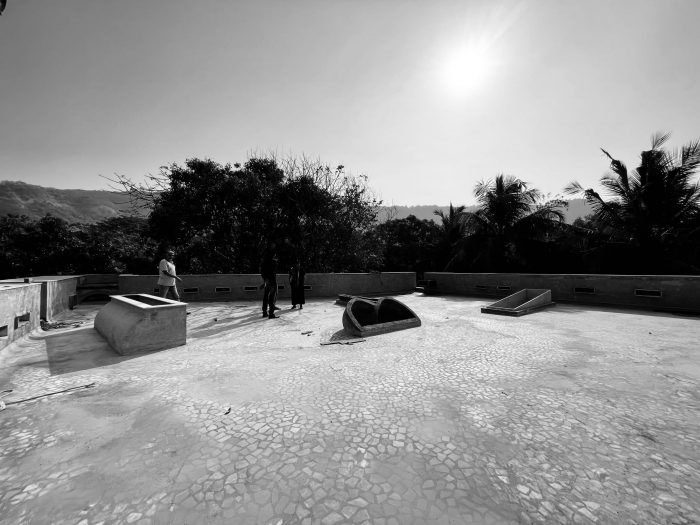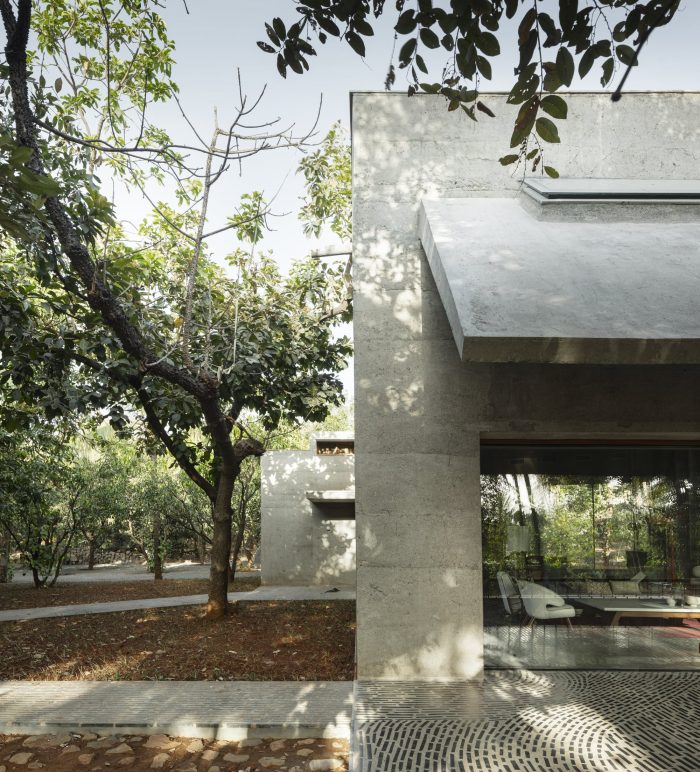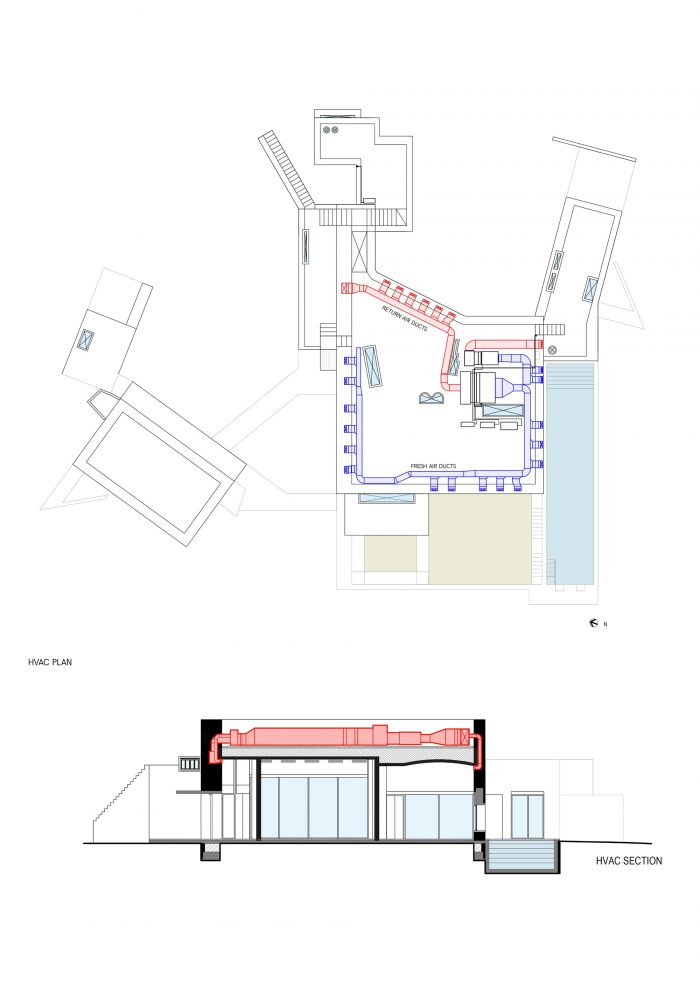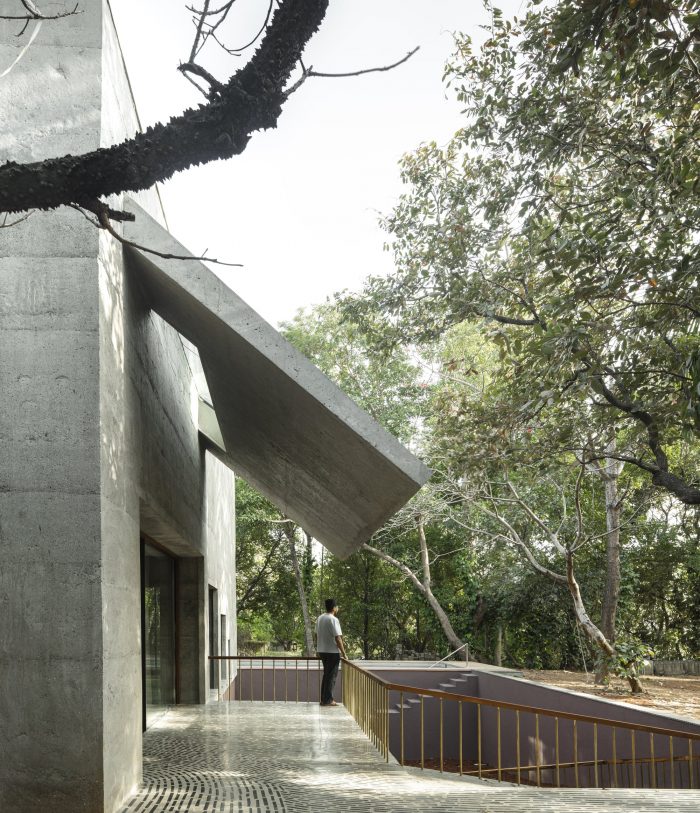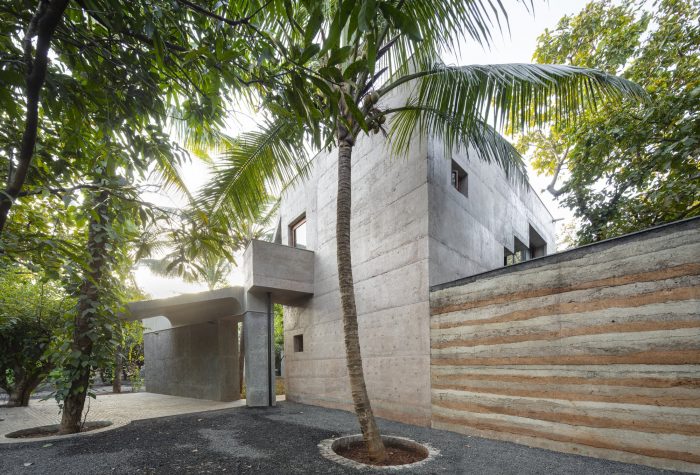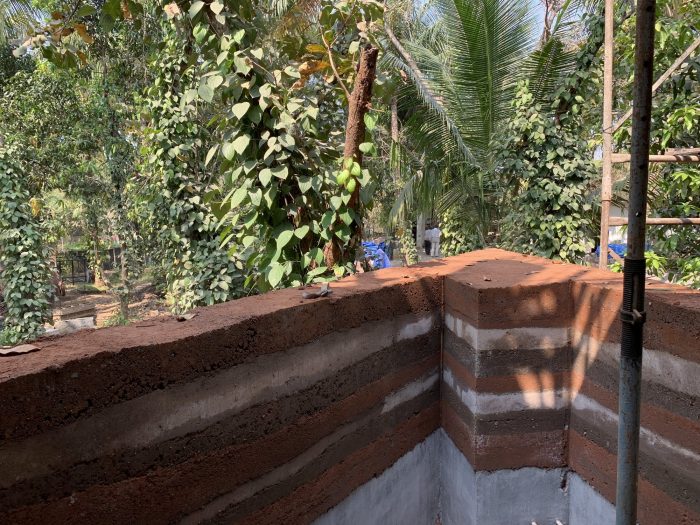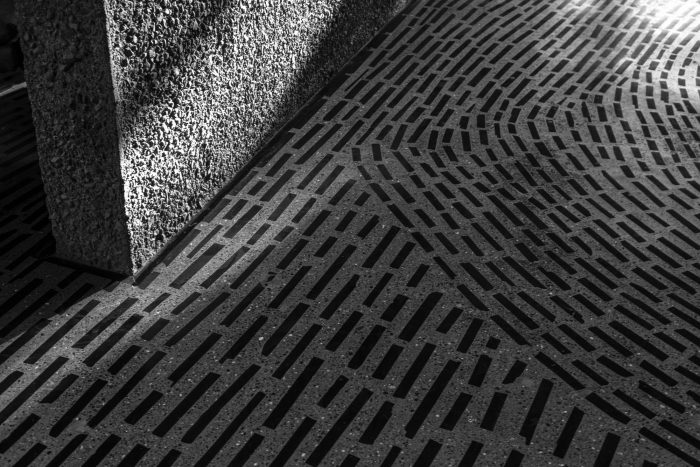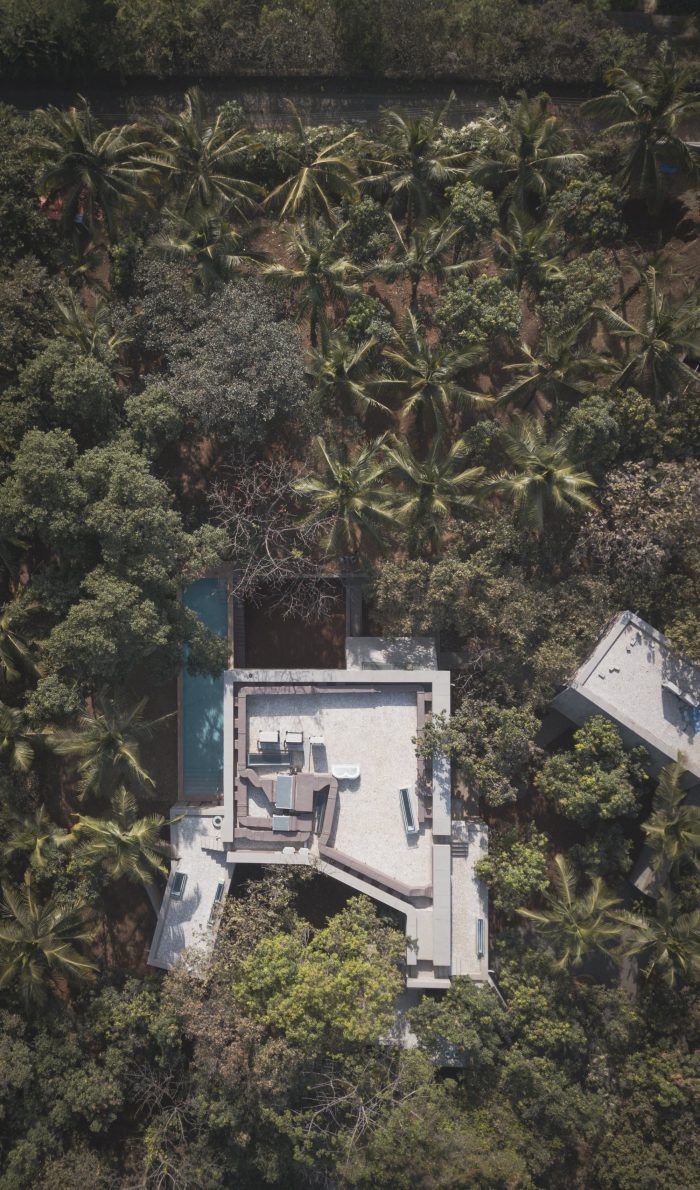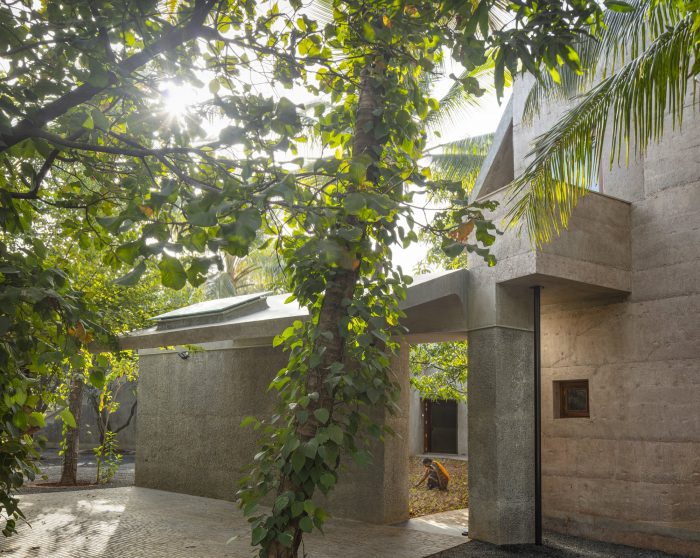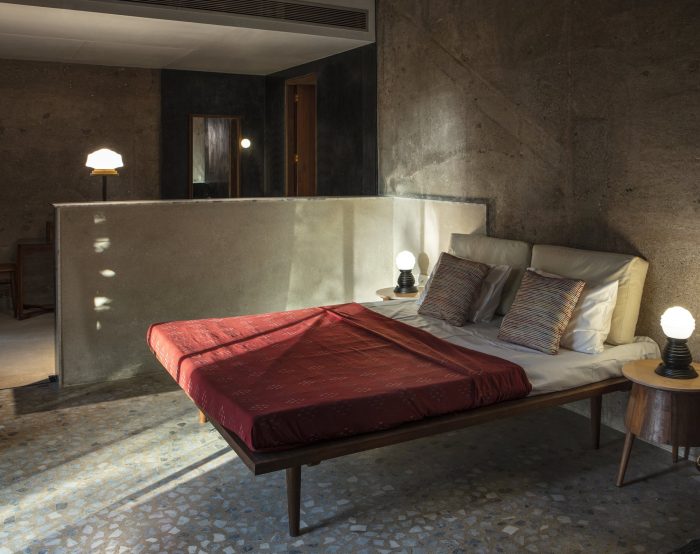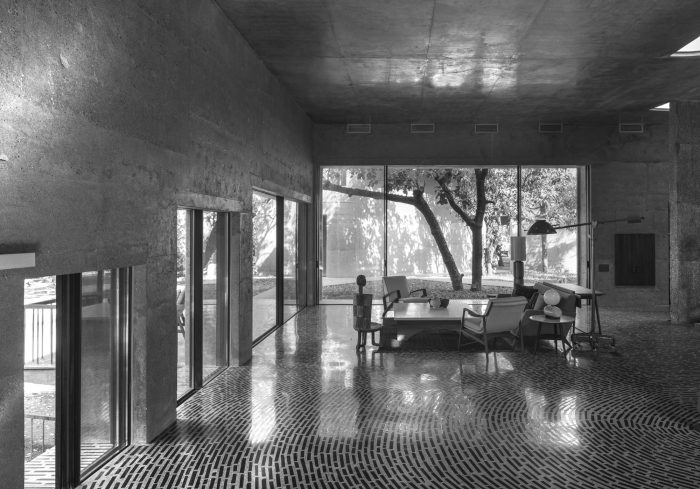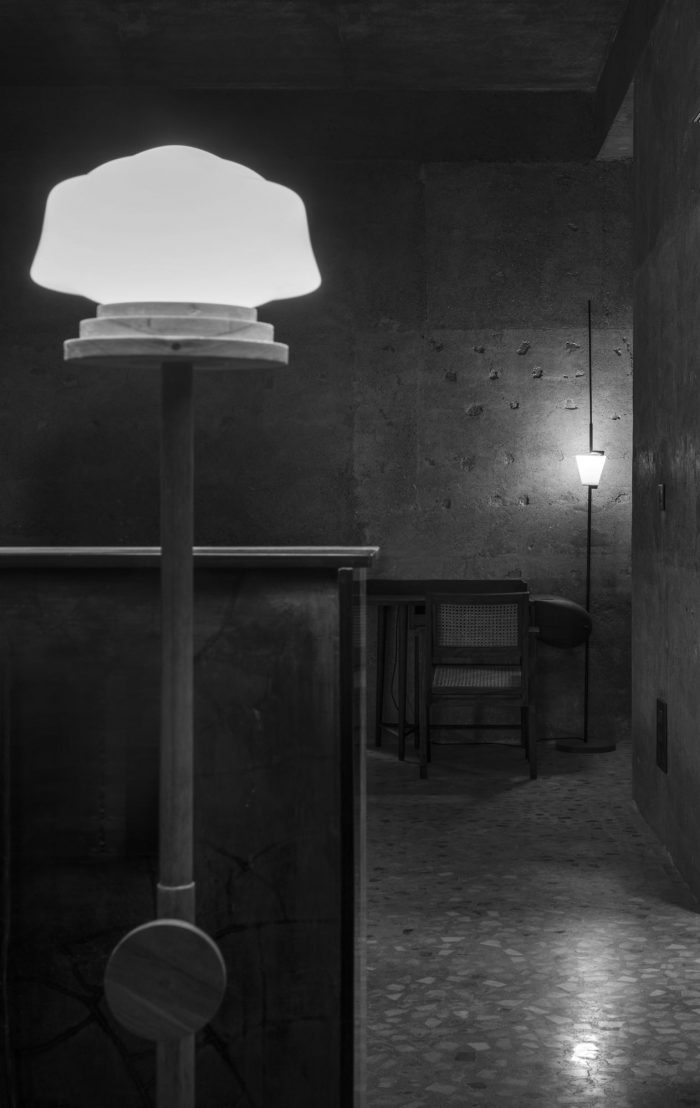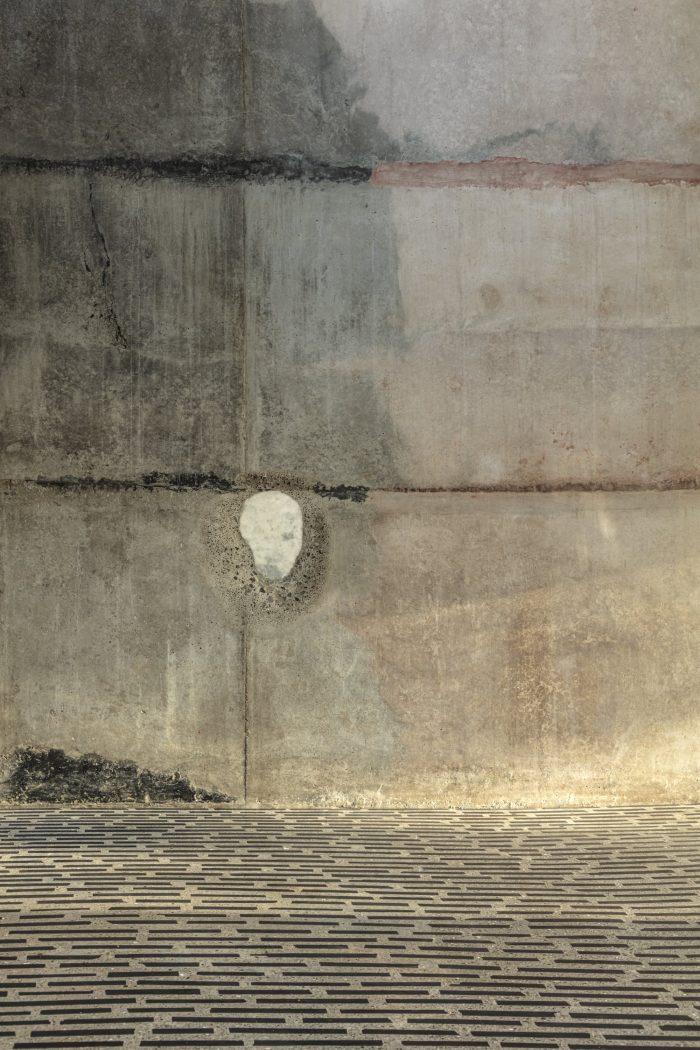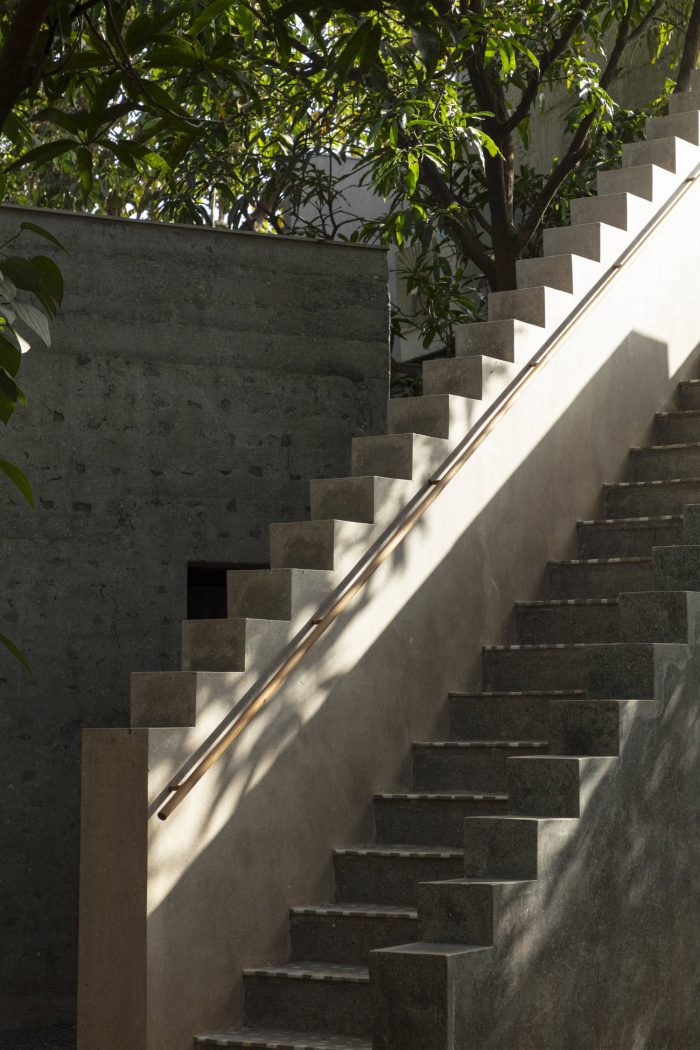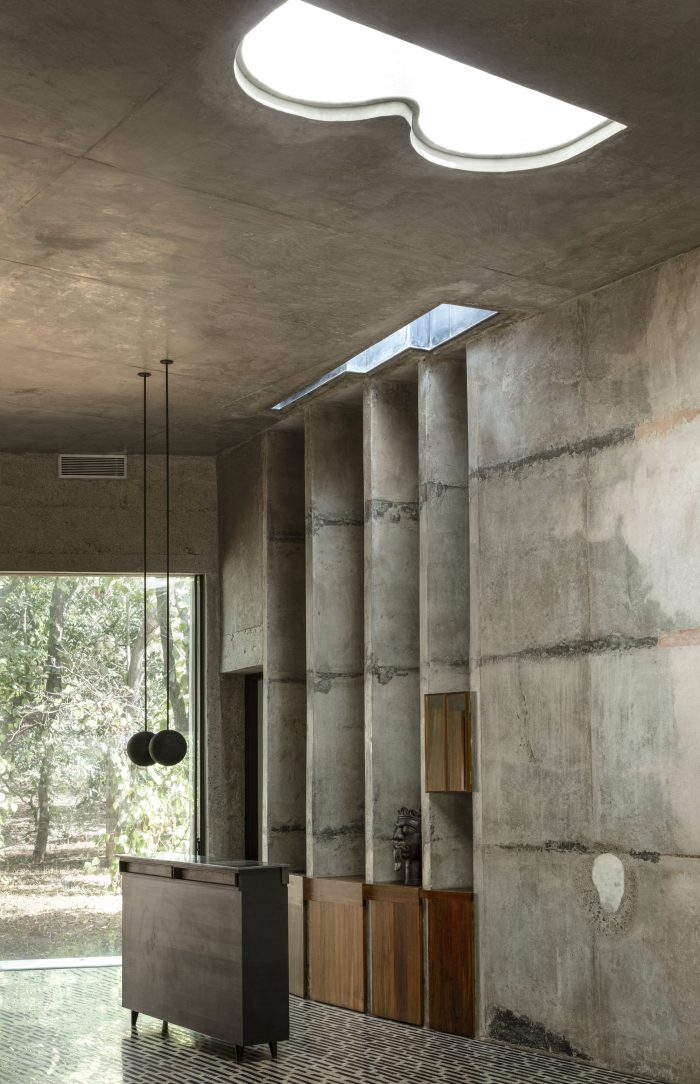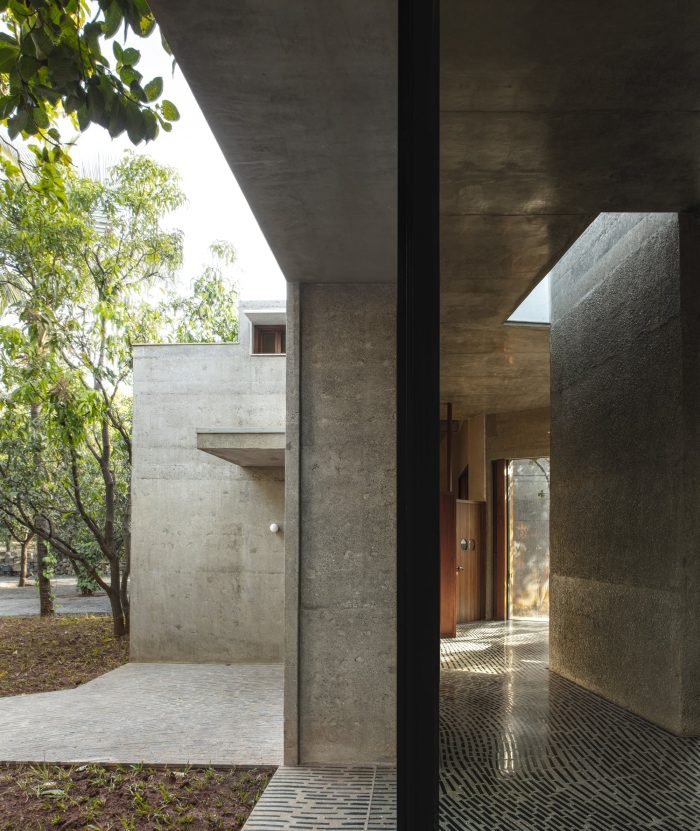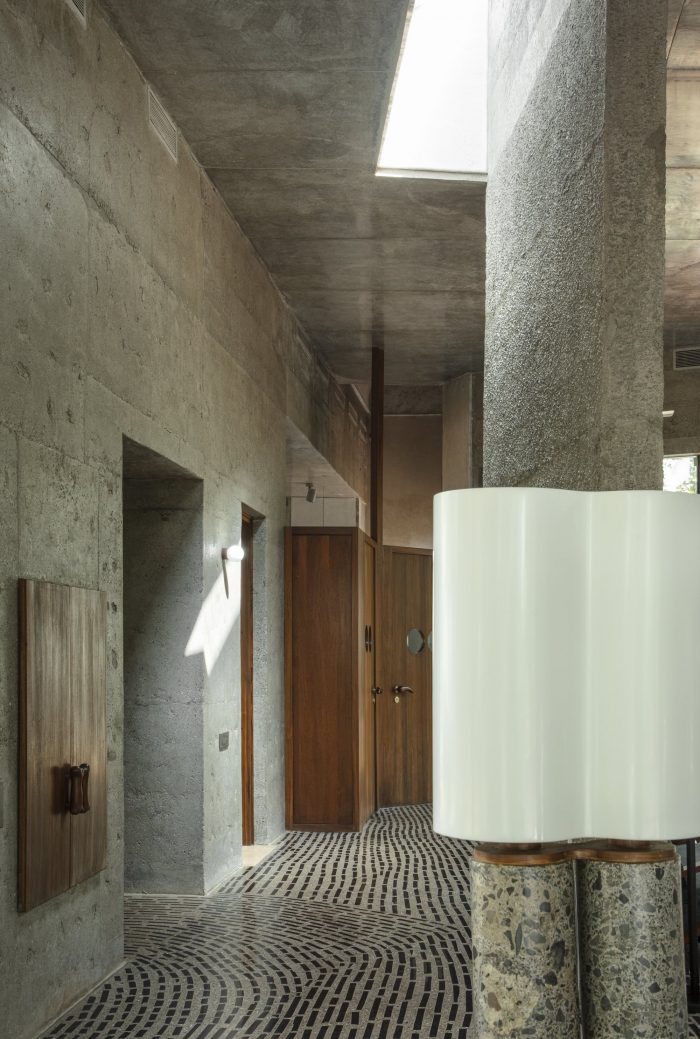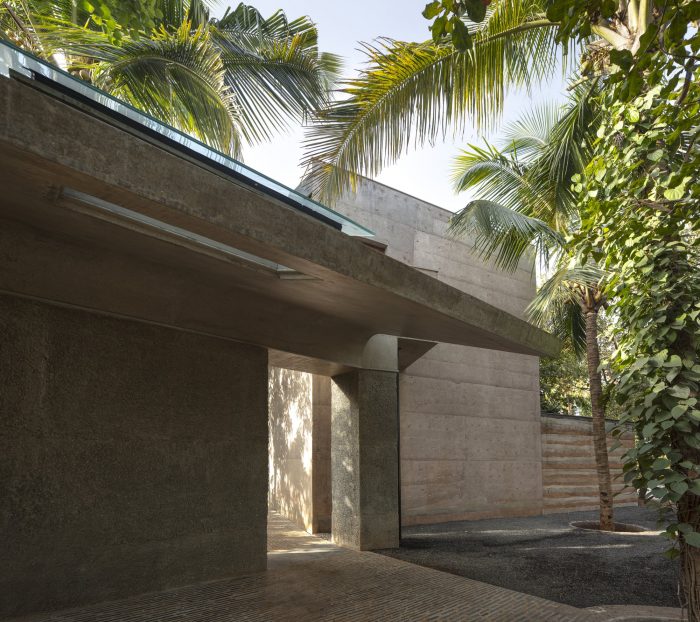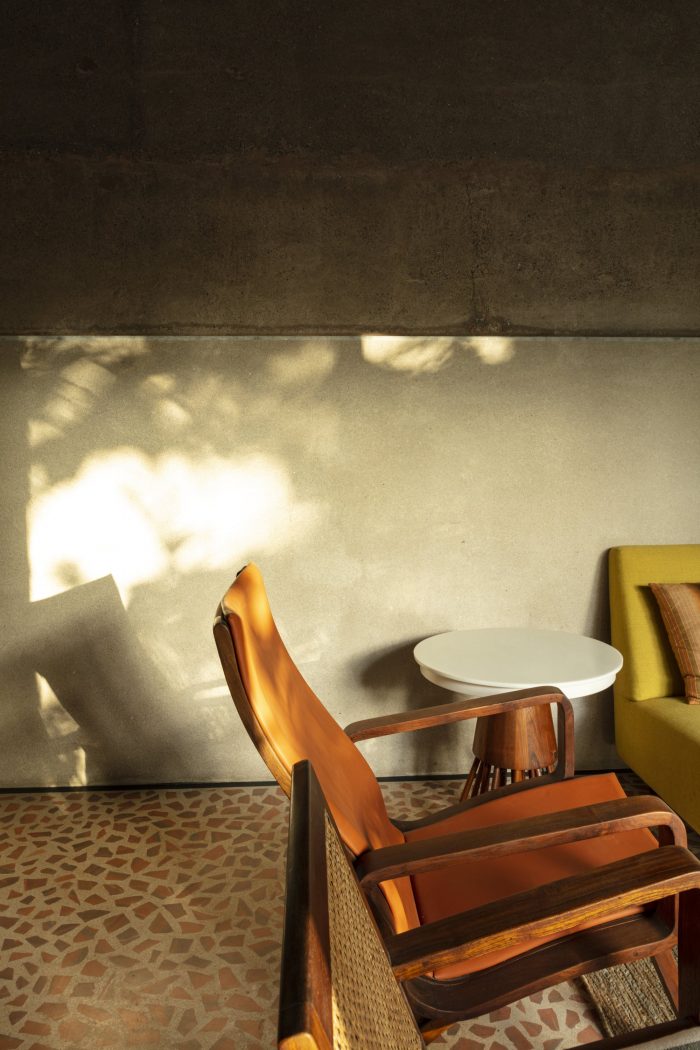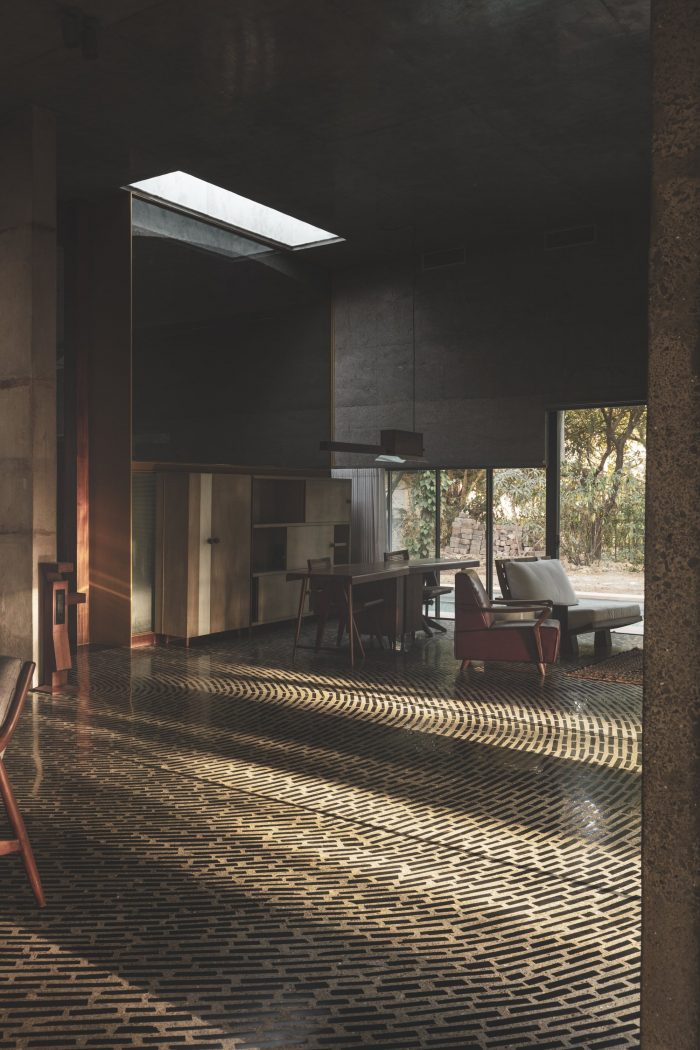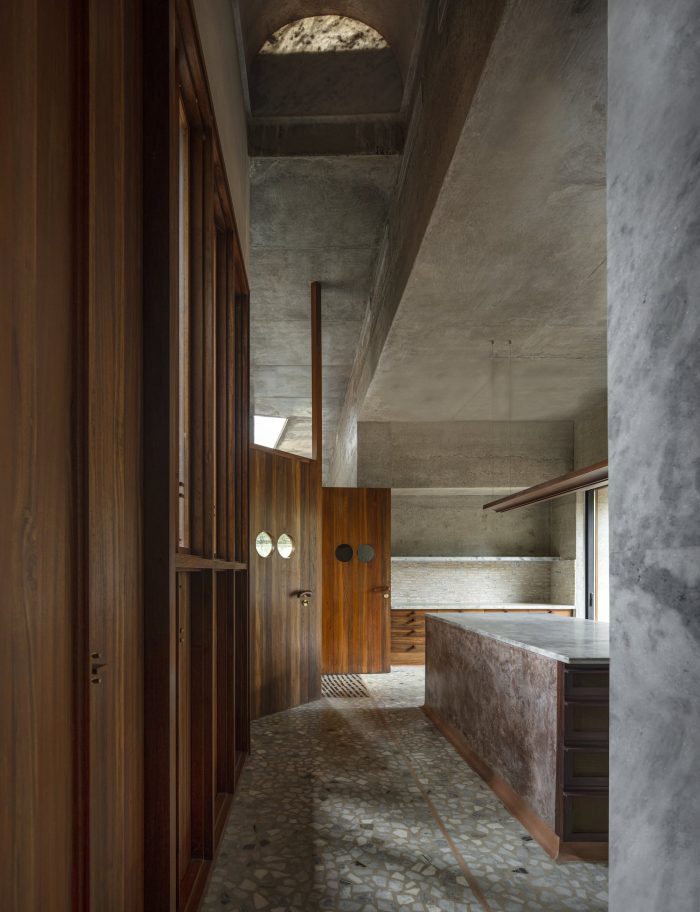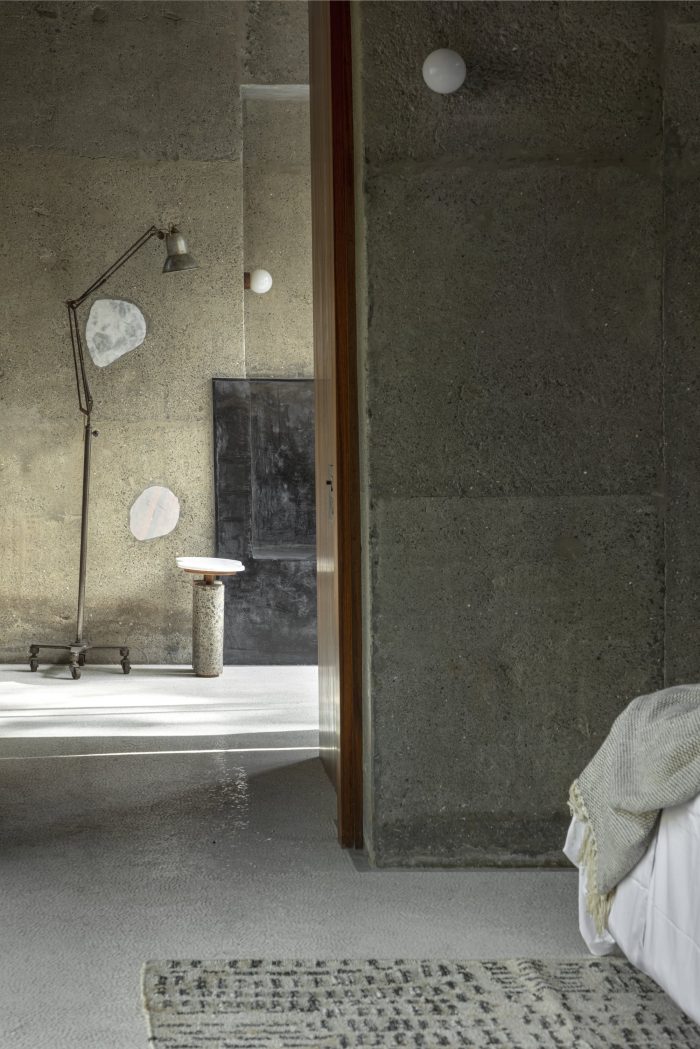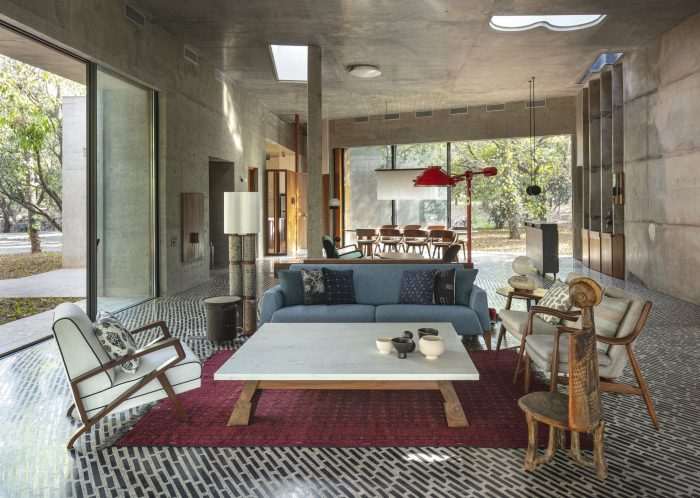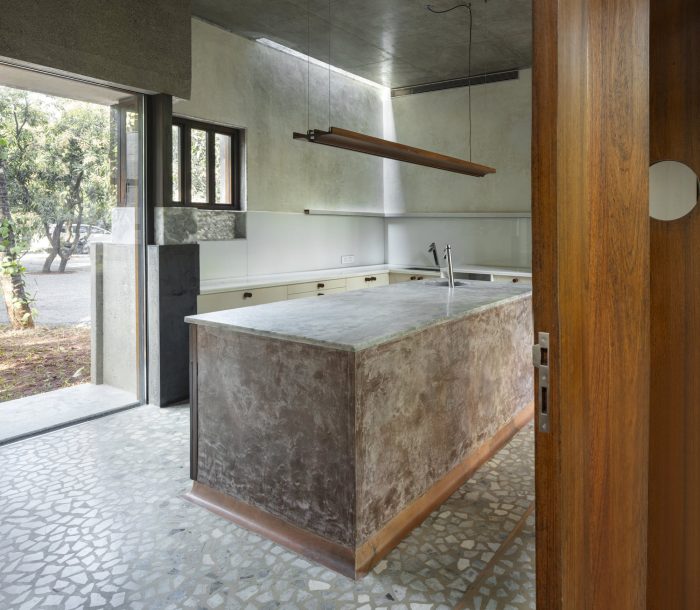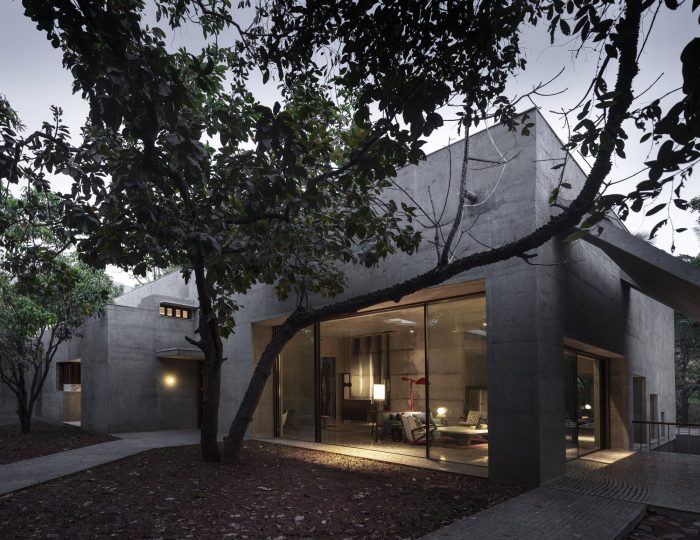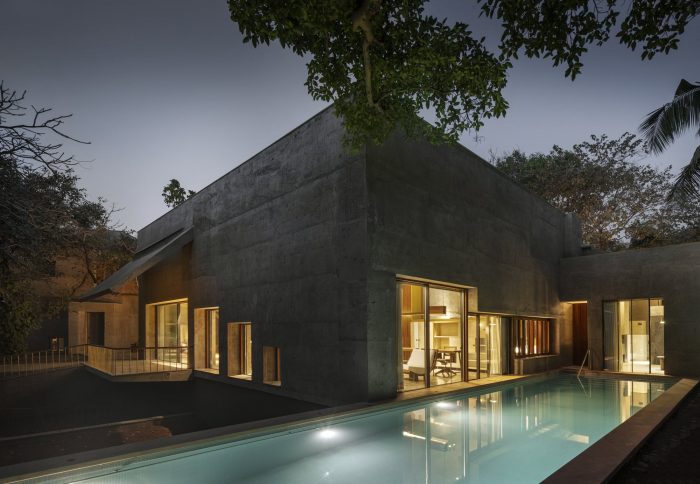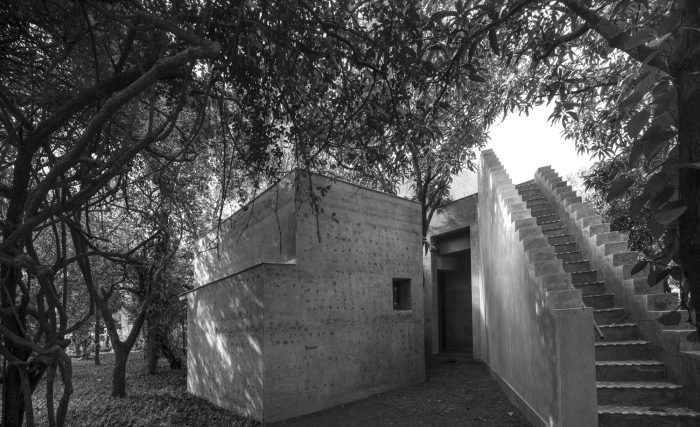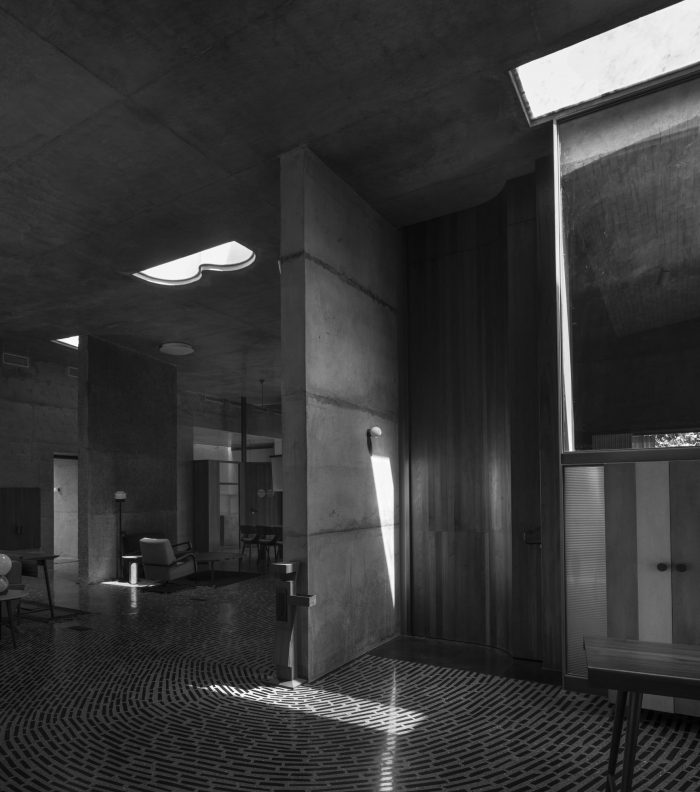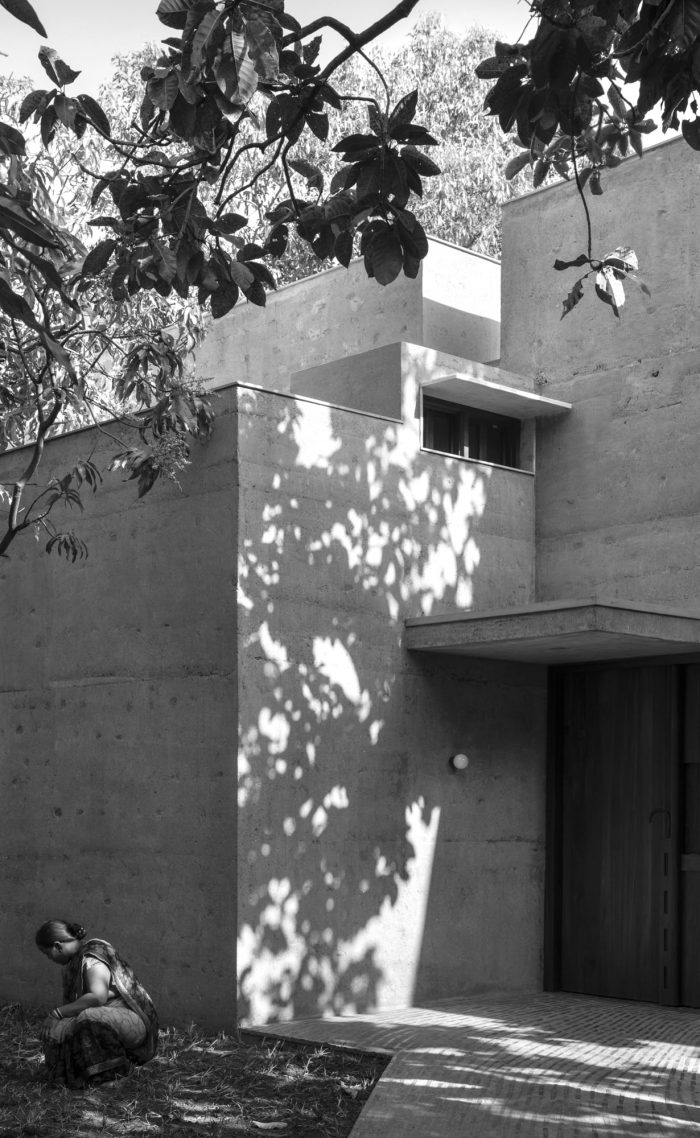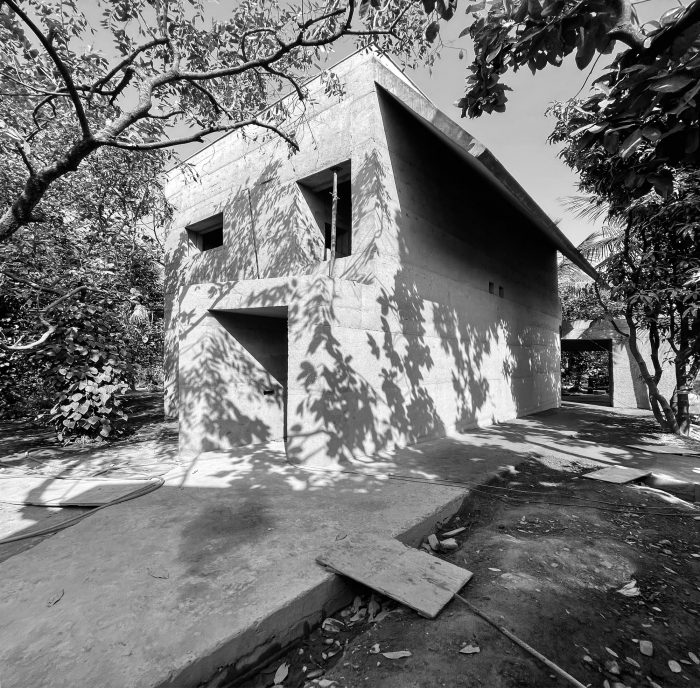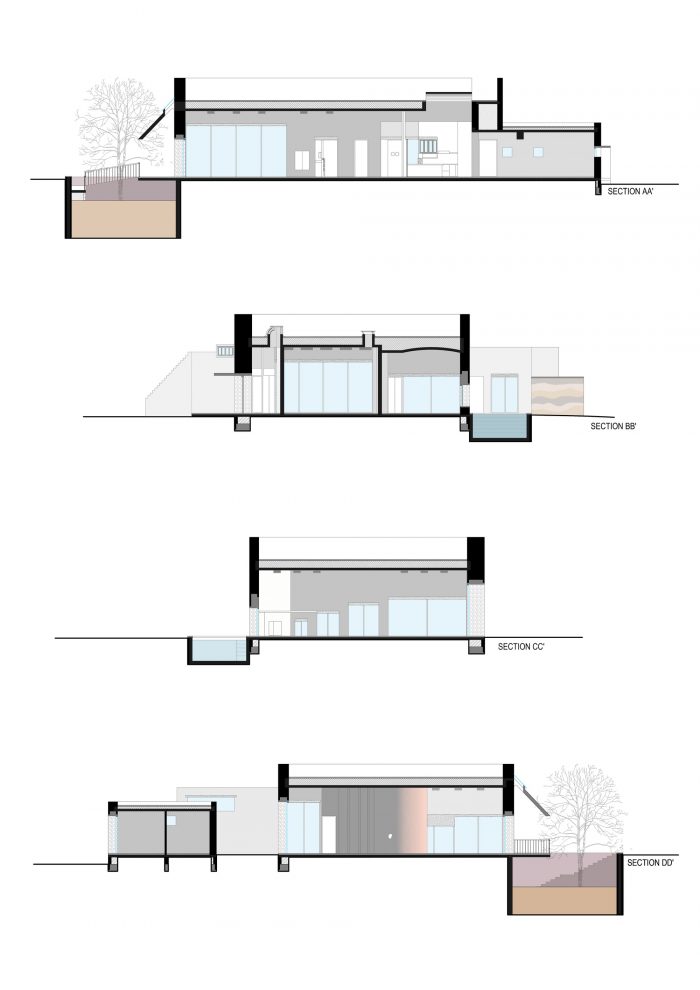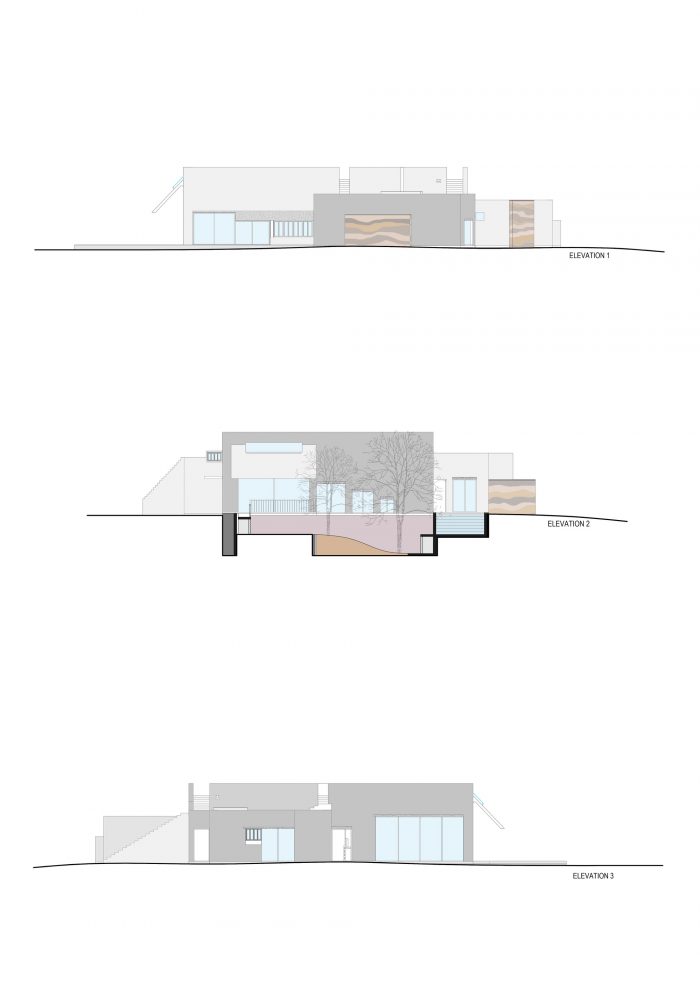每个项目都是对几个参数的回应–有些是物理的,有些是形而上的,有些是有形的,有些是无形的。今天,可持续发展的理念势在必行,但其定义有许多解释。这样的回应和解释就是我们亲切地命名的这所房子–混凝土实验之家。
Every project is a response to several parameters- some physical, some metaphysical, some tangible, and some intangible. Today the idea of sustainability is imperative, but its definition has many interpretations. One such response and interpretation is this house we fondly named- House of Concrete Experiments.
任何客户都会犹豫是否要为他们的家尝试新的想法和材料,但这个房子的主人不会。他是一个真正的赞助人;他自己曾在麻省理工学院学习,是一个有思想的进步者,对创新有一种态度,并理解失败只是通往成功的众多步骤之一。他明白环境和对环境的保护是首要的,对任何新事物的成本不是以其直接结果来量化的,而是以其未来几年的作用来量化的,建筑是最高形式的艺术。
Any client would be hesitant to experiment with new ideas and materials for their home, but not the owner of this house. A true patron; himself having studied at MIT, a thinking progressive mind with an attitude towards innovation and an understanding that failure is only one of the many steps to success. He understands that the environment and its care are primary that costs towards anything new is not quantified in its direct outcome, but in what it does for years ahead and that architecture is the highest form of art.
我已经得到了这位赞助人的祝福,不是一次而是两次,这是他的第二个家,我们为他建造了混凝土实验之家。为了避免对房子的详细描述过于迂腐,下面是它的突出特点。
I have been blessed, not once but twice with this patron, for whom this is his second home we built; the House of Concrete experiments. To avoid being pedantic over a detailed description of the house, below are its salient features.
混凝土实验之家 “是一个住宅项目,位于孟买附近的沿海城镇Alibaug。房子位于Zirad的Deotalai山脚下,在一个芒果园中。
The House of Concrete Experiments is a residential project, located in the coastal town of Alibaug, near Mumbai. Set on the foothills of Deotalai in Zirad, the house is amidst a mango orchard.
概念和规划-
1. 在设计之初,我们就决定在不干扰任何树木的情况下,将房子安置在树木周围,这自然导致了房子的蜿蜒破碎的形式。
2. 工地上现有的一个坑被做成了房子前面的一个下沉式庭院。树木在其中生长,几乎把绿叶带进了房子。
3. 房子被规划为一个大的工作室空间,只有一间卧室供夫妇使用。两间客房被叠放在一个独立的建筑中,作为主屋的附属建筑。
Concept and planning-
1. At the very onset of the design, it was decided to place the house around the trees without disturbing any of them, which naturally led to a meandering fragmented form of the house.
2. An existing pit in the land on site has been made into a sunken courtyard in front of the house. Trees are grown within almost bringing the green foliage into the house.
3. The house is planned as a large studio space with just one bedroom for the couple. Two guest rooms are stacked in a separate building as an annex to the main house.
墙和结构-
墙和结构的放置是为了成为雕塑般的元素,而不是在一个特定的网格上。房子是一个大的无柱空间,有一个无缝的平面混凝土天花板,没有阻碍这个混凝土体积的内墙。
Walls and Structure-
Walls and structures are placed so as to become sculptural elements and not on a particular grid. The house is a large column-free space, with a seamless flat concrete ceiling with no internal walls that hinder this concrete volume.
2. 三个大的倾斜的悬臂,打破了结构稳定性的概念。这些都是经过精心设计的,为房屋周围的外部运动提供遮阳,但也增加了房屋的其他平面形式。
3. 房屋的墙壁从450毫米厚到1000毫米厚不等。墙壁的厚度作为一个天然的绝缘体,使房屋内部比外部凉爽得多。
2. Three large sloping, cantilevered overhangs defy concepts of structural stability. These are meticulously designed to offer shade to the external movement around the house but also add to an otherwise flat form of the house.
3. The walls of the house range from 450mm thick to 1000mm thick. The thickness of the walls act as a natural insulator making the insides of the house much cooler than the outside.
4. 这种厚度也使得有机会利用墙壁的体积来容纳内部的存储空间,凹陷的窗户用于防水,在这种情况下,整个房屋的冷却系统也是如此。
5. 一种主动冷却的方法,从古代捕捉凉风进入空间的方法中获得灵感,这种空调方法利用墙壁的厚度,在墙壁上刻出小管道,携带凉风,在房屋的大体积中循环,反过来也冷却混凝土墙壁。
4. The thickness also allows opportunities to use the volume of the walls to accommodate storage within, recess windows for waterproofing, and in this case the entire cooling system for the house as well.
5. An active cooling method drawing its inspiration from ancient ways of catching cool breeze into spaces, this method of air conditioning uses the thickness of the walls to its advantage, carving out small ducts within them which carry this cool air and circulate it through the large volume of the house in turn also cooling the walls in concrete.
材料–混凝土:回收的:实验性的
这座房子只使用一种材料;那就是混凝土浇注。触觉墙都是用不同的混凝土实验浇筑的,为每一面墙呈现特定的纹理。这些实验包括碎石铸造混凝土;水喷射混凝土和带有颜料的成型混凝土。
Materials- Concrete : Recycled : Experimental –
The house is true to one material; that is cast concrete. The tactile walls are all cast with different experiments in concrete that render specific textures to each of the walls. The experiments include debris cast concrete; waterjet concrete and form finish concrete with pigments.
2. 主屋的厚墙是用现场的碎片浇筑的,以减少材料的使用,并在墙体研磨完成后呈现出某种粗糙的纹理。这些碎片包括石屑、碎砖,有时还有大块的废石,几乎像遗物一样嵌在墙里。
3. 客体块是用粉红色的混凝土浇筑的,这是在其中加入砖粉制成的。在主屋的冷灰色的衬托下,这给客人区块带来了些许胭脂色。
2. The thick walls of the main house in concrete are cast with debris from the site to reduce the usage of material and render a certain rough texture when the walls are ground and finished. The debris includes stone chips, broken bricks, and at times large pieces of waste stone embedded in the walls almost like a relic.
3. The guest block is cast in pink concrete which is made by adding brick powder in it. This gives a slight blush color to the guest block against the cold grey of the main house.
4. 地板是由回收的废旧石块浇注在混凝土水磨石中制成的。黑色卡达帕、白色大理石和粉色大理石都以不同的形式用在不同的地方,使地板成为大型艺术品。卧室和浴室的地板是用铺在水泥中的小碎瓦片做的,这些碎瓦片闪闪发光,反射着阳光照亮了这些空间。
5. 光线是我们所有工作中非常重要的建筑材料。这所房子有多个俏皮的天窗,所有不同的形状、大小和古怪的地板,然而都被战略性地放置在那里,以捕捉全天的光线。锐利的光线从这些地方落在地板上,在整个房子里几乎形成了各种光斑和阴影的窥视。
4. The floors are made by recycling waste stone pieces cast in concrete terrazzo. Black kadappa, white marble, and pink marble are all used in different areas in different forms to make the flooring a large artwork. Bedroom and bathroom floors are done in small broken tile chips laid in cement that gleam and reflect the sunlight brightening up these spaces.
5. Light is a very important building material in all our work. The house has multiple playful skylights, all of the different shapes, sizes, and quirky floors, however all strategically placed to catch the light throughout the day. Sharp rays of light from these fall on the floor creating almost a peek-a-boo of various light patches and shadows throughout the entire house.
混凝土实验的房子实际上是在所有方面的实验,它的规划、施工、结构设计、材料使用、光和影的游戏以及服务。这个房子的建筑和室内的细节创造了持续的好奇心,使原本压倒性的空间变得非常亲切和宜居。这座房子是一个不能拍照的地方,而是一个需要接触和体验的空间。
The house of concrete experiments is in fact an experiment in all its aspects, its planning, construction, structural design, material usage, the play of light and shadow, and its services. The details incorporated in the architecture and interiors of this house create continual intrigue making the otherwise overwhelming space very intimate and liveable. The house is one that cannot be photographed, but a space that needs to be encountered and experienced.
Architects: Samira Rathod Design Atelier
Area : 5000 ft²
Year : 2022
Photographs :Niveditaa Gupta
Manufacturers : Vitrum, Great Estaren, Mahendra Doshi, The Big Piano, baro
Lead Architect : Samira Rathod
Carpentry : Krishna Interiors, Sangia Interiors
HVAC : Nova Initiative
Structural Consultant : Studio Struct
Civil Works : Jog Infra and Mortar Construction
Project Architect : Jay Shah
Aluminum Windows : Vitrum Windows
Project Management : Girish Bhadra
City : Alibag, Maharashtra, India
Country : India

